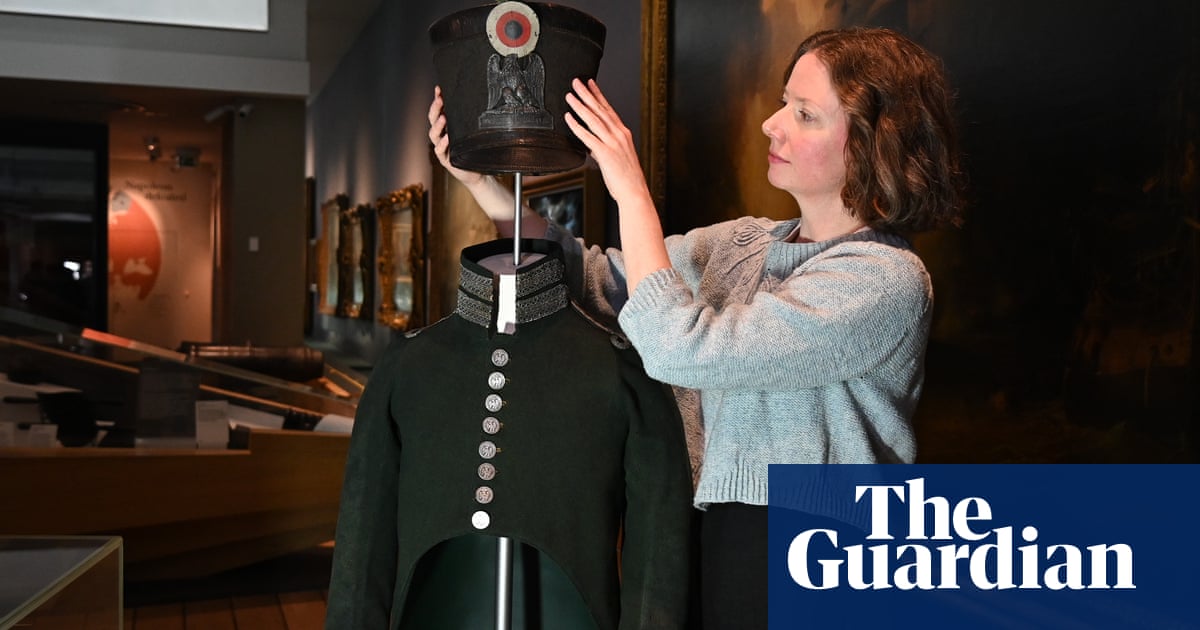Jobs
British escaper’s stolen Napoleonic uniform and journal go on display in London

A handwritten manuscript detailing the daring escape of a British prisoner of Napoleon’s troops – with the flamboyant French uniform in which he disguised himself as he fled – have gone on display at the National Maritime Museum in London after being carefully preserved for more than two centuries by the prisoner’s descendants.
The “rare and very special” uniform, including its tall and exuberantly feathered hat, was worn in August 1809 by the 19-year-old naval midshipman Charles Hare as he escaped a military prison in what is now western Germany and travelled by coach, river boat, ship and on foot back to his home in Lincolnshire, accompanied by his pet dog.
The green and silver uniform and feathered hat are thought to be the only surviving example of a French customs officer’s uniform from the Napoleonic wars, when Britain and other European powers were fighting France. But what makes them particularly special, according to the museum, is Hare’s breathless and highly entertaining first-person account of his perilous escapade.
“It’s almost unique to have them both,” said Katherine Gazzard, the museum’s curator of art. “Uniforms are really interesting, because in some ways they are designed to be de-personalised items that make one person look like another, but at the same time they are deeply personal objects. [As museums], we need additional things to put people back into these outfits, and that’s exactly what we have with the narrative.”
Hare’s story is certainly remarkable. The son of a naval officer from Fillingham in Lincolnshire, he had joined the navy in 1801 aged just 11 – as was common for aspiring officers at the time – and by 13 was already a French prisoner of war after his ship was captured in the Channel.
Six years later, he was still being held in a military fortress in Saarlouis in present-day Germany when he persuaded a member of the (notoriously corruptible) French customs force to provide him with forged papers and a uniform, and arrange a carriage and driver to enable his escape.
Hare writes: “As soon as I reached the end of the Town, I fully felt the imprudence of my conduct. Alarm seized me, lest this driver should betray me to the police. If taken in a military habit, bearing arms or false papers, instant death awaits me by the decrees of Bonaparte; the violation of which I fully knew.”
Happily, his driver was equally open to persuasion, and with periodic stops “to refresh my ‘compagnon de voyage’ with a ‘Bouteill de Vin’ which he more frequently needed than suited my perilous situation”, Hare made it to Mainz, where he and the unnamed English terrier were able to join a boat heading downstream on the Rhine.
Though Hare spoke excellent French, there followed a fraught journey involving a drunken wedding party, a thunderstorm and frequent inquiries from other French officers. “Whenever an unpleasant question was addressed to me … by inquisitive people,” Hare writes, “I figured not to hear them and kept continually caressing and noticing my Dog; which strategem never failed to succeed from the extreme politeness of a Frenchman seeming more interested with my dog than with his intruding conversation.”
After making it back home, Hare swiftly returned to the navy, later settling in Canada, where his remarkable archive remained until his descendants contacted the museum. The handwritten manuscript, though unsigned, is dated 1832 and has the name of Hare’s son George on the front, who would have been seven at the time.
“I think it’s quite unlikely that little George Hare is writing out that narrative,” said Gazzard. “It’s much more likely that Charles, who was [then] a merchant captain and often away for long periods, had written out the story and given it to his son as a record of his adventures, and you can imagine young George Hare reading it as a bedtime story when his dad is away at sea.”










